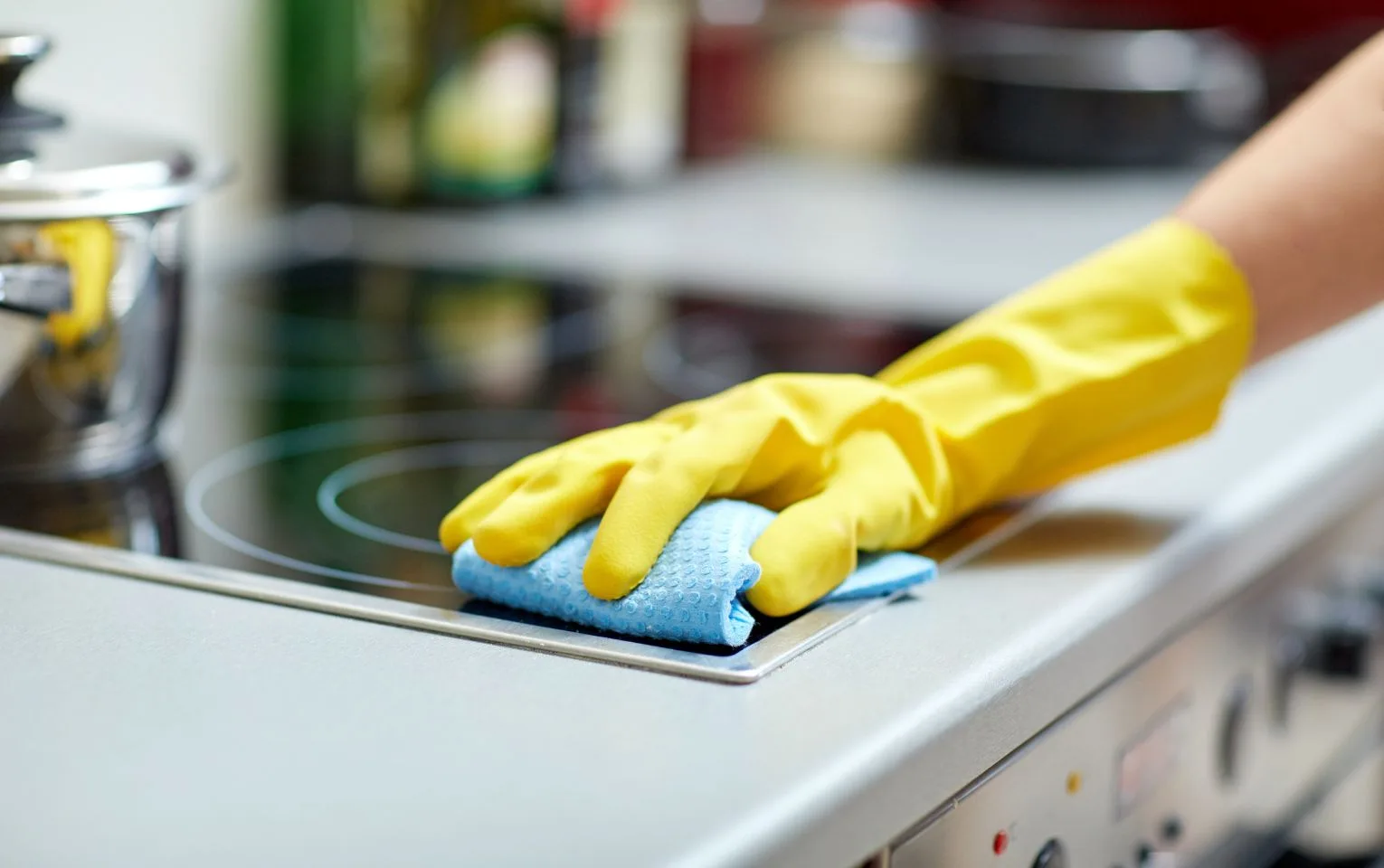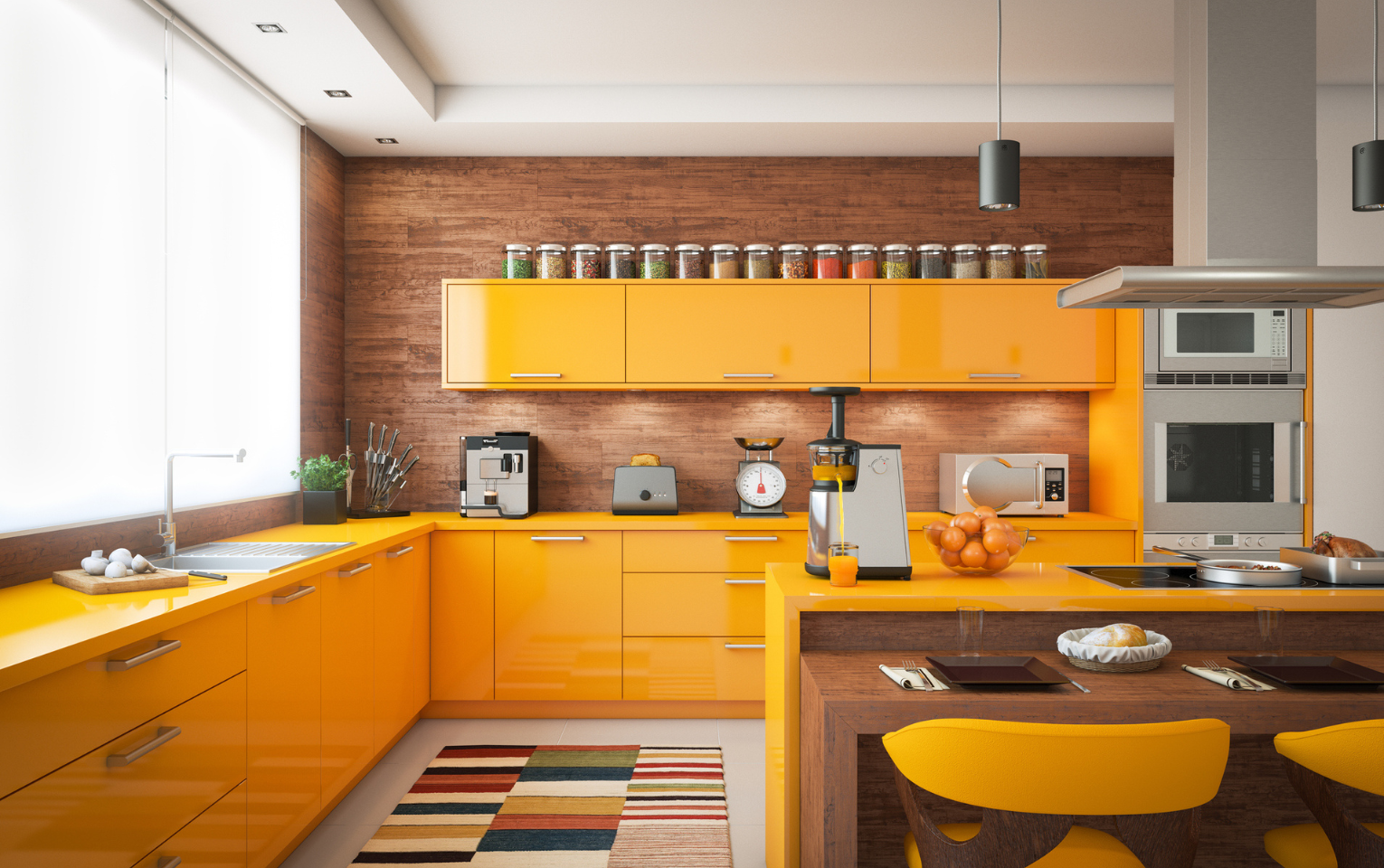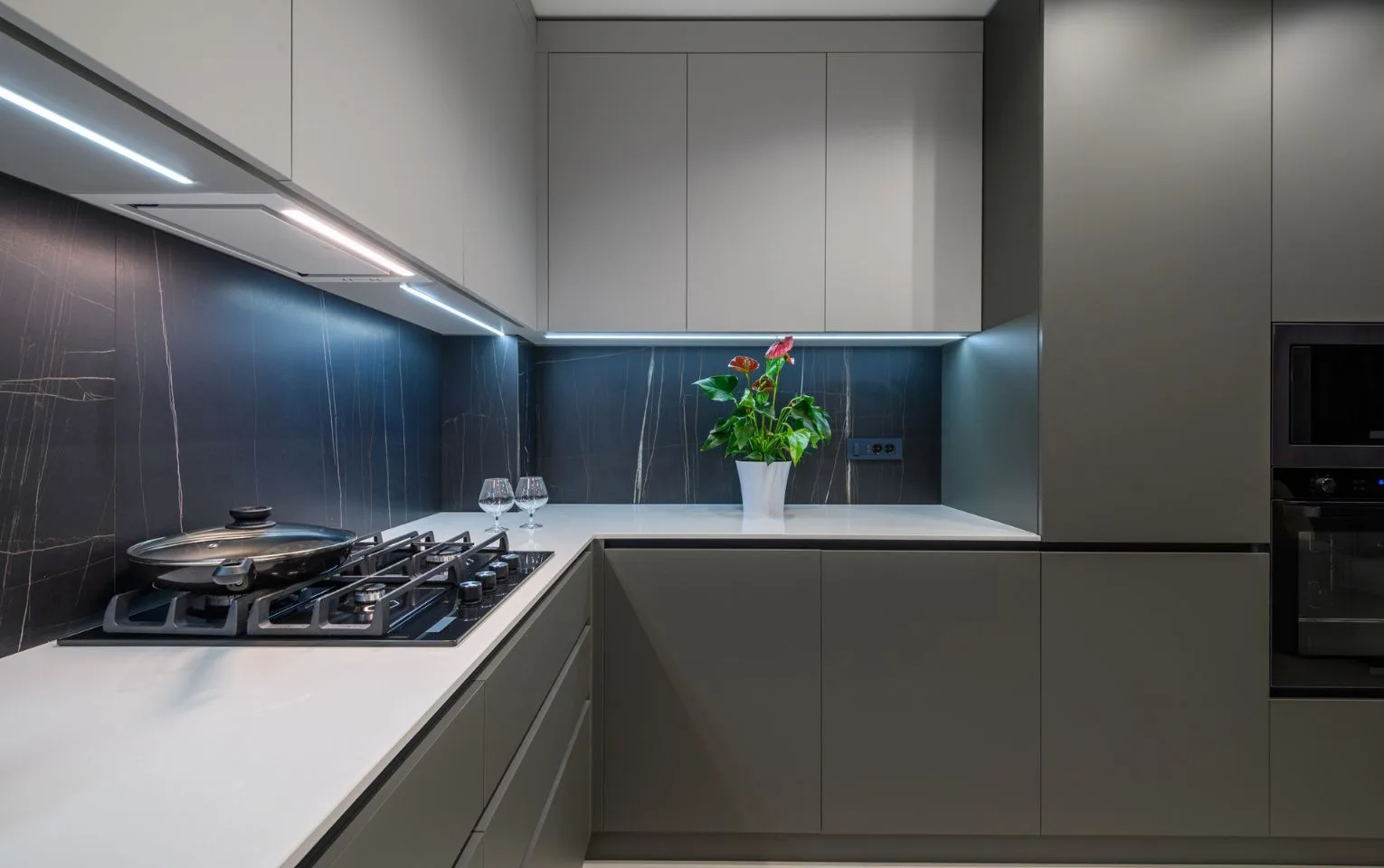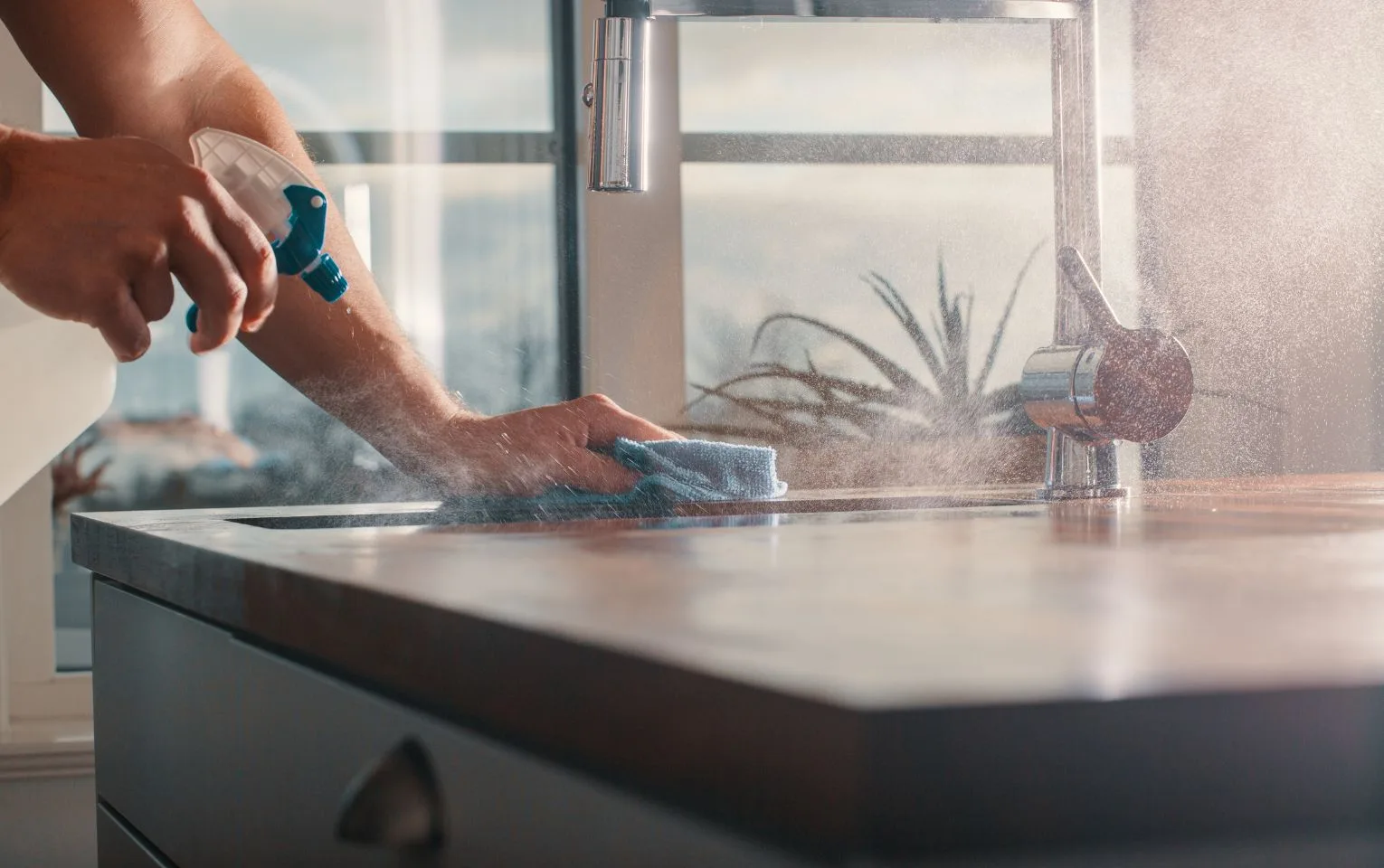Introduction
Kitchen cabinets are an essential part of any kitchen, providing storage space and adding to the overall aesthetics of the room. Over time, however, cabinets can accumulate dirt, grease, and grime, making them look dull and worn out. Cleaning your kitchen cabinets regularly is important to keep them looking good as new and to maintain their longevity. In this blog post, we will discuss effective methods and tips on how to clean kitchen cabinets to restore their shine and make them look fresh.
When it comes to cleaning kitchen cabinets, it’s important to consider the materials they are made of. Different materials require different cleaning methods to avoid any damage. For example, if your cabinets are made of wood, you need to be cautious about using harsh chemicals or abrasive cleaners that can strip away the finish or scratch the surface. On the other hand, if your cabinets are made of laminate or metal, you may have more flexibility in the cleaning products you can use.
Before you start cleaning your kitchen cabinets, it’s a good idea to remove all the items from inside them. This will allow you to thoroughly clean the interior surfaces and ensure that no dirt or debris is left behind. It’s also a great opportunity to declutter and organize your cabinets, getting rid of any items that you no longer need or use.
Once you have emptied the cabinets, you can begin the cleaning process. Start by dusting off any loose dirt or debris using a soft cloth or a feather duster. This will help prevent scratching the surfaces when you start using cleaning products. Next, you can use a mild detergent mixed with warm water to clean the cabinet doors and frames. Avoid using excessive water, as it can cause damage to the wood or laminate. Instead, dampen a cloth with the cleaning solution and gently wipe down the surfaces. For stubborn stains or grease buildup, you can use a non-abrasive cleaner or a mixture of baking soda and water.
When cleaning the interior of the cabinets, pay special attention to the shelves and corners where crumbs and spills tend to accumulate. Use a vacuum cleaner or a handheld brush to remove any loose debris, and then wipe down the surfaces with a damp cloth or a mild cleaning solution. For metal or glass shelves, you can use a glass cleaner to remove any smudges or fingerprints.
After you have finished cleaning the cabinets, it’s important to dry them thoroughly to prevent any moisture damage. Use a clean, dry cloth to wipe down all the surfaces, paying attention to any areas where water may have pooled. If your cabinets have any glass or metal accents, you can use a microfiber cloth to polish them and remove any streaks.
In conclusion, cleaning your kitchen cabinets regularly is essential to maintain their appearance and prolong their lifespan. By following these effective cleaning methods and tips, you can restore the shine to your cabinets and make them look fresh and inviting. So, roll up your sleeves, gather your cleaning supplies, and give your kitchen cabinets the attention they deserve!
Gather Your Cleaning Supplies
Before you begin cleaning your kitchen cabinets, it is important to gather all the necessary cleaning supplies. Here are some items you will need:
-
Mild dish soap or a cabinet cleaner
-
Warm water
-
Microfiber or soft cloth
-
Vinegar
-
Baking soda
-
Old toothbrush
-
Optional: Wood polish or oil
-
Bucket or large basin
-
Rubber gloves
-
Step stool or ladder
-
Lint-free cloth
Having all these supplies ready will make the cleaning process more efficient and ensure that you have everything you need to tackle any stains or grime on your kitchen cabinets.
When choosing a mild dish soap or cabinet cleaner, opt for one that is specifically designed for cleaning wood surfaces. This will help protect the finish of your cabinets while effectively removing dirt and grease.
Warm water is essential for diluting the cleaning solution and loosening any stubborn residue. Fill a bucket or large basin with warm water to have it readily available during the cleaning process.
Microfiber or soft cloth is the ideal choice for wiping down your cabinets. These materials are gentle on the surface and won’t scratch or damage the finish. Avoid using abrasive sponges or scrub brushes, as they can leave marks or cause the wood to lose its luster.
Vinegar is a natural cleaning agent that can effectively cut through grease and grime. Mix equal parts vinegar and warm water in a spray bottle for an easy-to-use cleaning solution.
Baking soda is a versatile cleaning agent that can help remove tough stains and odors from your cabinets. Create a paste by mixing baking soda with a small amount of water, and use it to scrub away any stubborn spots.
An old toothbrush is handy for reaching into tight corners and crevices that may be difficult to clean with a cloth. Use it to gently scrub away any dirt or grime that has accumulated in these hard-to-reach areas.
Wood polish or oil is optional but can be used to restore the shine and luster of your cabinets after cleaning. Choose a product that is specifically formulated for wood surfaces and follow the manufacturer’s instructions for best results.
Lastly, a step stool or ladder may be necessary if you have high or hard-to-reach cabinets. Ensure that you have a stable and secure surface to stand on while cleaning to prevent accidents or injuries.
By gathering all these cleaning supplies beforehand, you will be well-prepared to tackle the task of cleaning your kitchen cabinets and achieve a sparkling clean result.
General Cleaning Steps
Now that you have your cleaning supplies ready, let’s move on to the general steps for cleaning kitchen cabinets:
- 🌷Remove all items from the cabinets. This will make it easier to clean the surfaces and ensure that no cleaning solution or water comes into contact with your belongings.
- 🌷Start by wiping down the exterior surfaces of the cabinets with a microfiber or soft cloth dampened with warm water and a mild dish soap. This will help remove any loose dirt or grime.
- 🌷For stubborn stains or grease buildup, create a cleaning solution by mixing warm water with a small amount of dish soap or a cabinet cleaner. Apply the solution to a cloth and gently scrub the affected areas.
- 🌷Rinse the cloth with clean water and wipe down the cabinets again to remove any residue from the cleaning solution.
- 🌷For wooden cabinets, it is important to avoid excessive moisture. After cleaning, make sure to dry the surfaces thoroughly with a clean, dry cloth.
- 🌷If there are any hardware or handles on the cabinets, clean them separately using the same cleaning solution or a vinegar-water mixture. Use an old toothbrush to reach into crevices and remove any dirt or grime.
- 🌷Once the cabinets are clean and dry, you can optionally apply a wood polish or oil to restore their shine and protect the wood.
- 🌷Finally, organize and place back the items into the cabinets, ensuring that they are clean and free from any spills or debris.

Cleaning your kitchen cabinets regularly is essential to maintain their appearance and prolong their lifespan. However, it is also important to note that the cleaning process may vary depending on the material of your cabinets. For example, if you have laminate cabinets, you should avoid using abrasive cleaners or scrub brushes, as they can damage the surface. Instead, opt for a mild cleaner and a soft cloth to gently clean the cabinets.
Additionally, if you have glass-front cabinets, you may need to pay extra attention to the glass panels. Use a glass cleaner to remove any fingerprints or smudges and ensure that the glass is crystal clear.
Furthermore, if you notice any deep scratches or damages on your cabinets during the cleaning process, you may need to consider refinishing or repainting them. This will not only restore their appearance but also provide an added layer of protection.
Remember, maintaining clean and organized kitchen cabinets not only enhances the overall look of your kitchen but also makes it easier to find and access your cooking essentials. So, make it a habit to clean your cabinets regularly and enjoy a clutter-free and inviting kitchen space.
Specific Cleaning Methods
Depending on the material and finish of your kitchen cabinets, there are specific cleaning methods you can use to achieve the best results. Let’s take a look at some of these methods:
 1. Cleaning Painted Cabinets
1. Cleaning Painted Cabinets
If your kitchen cabinets have a painted finish, it is important to use gentle cleaning methods to avoid damaging the paint. Here’s how you can clean painted cabinets:
- Start by wiping down the cabinets with a soft cloth dampened with warm water and a mild dish soap. This will help remove any surface dirt or grime.
- If there are any stubborn stains or grease, create a paste by mixing baking soda with water. Apply the paste to the stains and let it sit for a few minutes before gently scrubbing with a cloth or soft brush. The baking soda will help lift the stains without damaging the paint.
- Rinse the cabinets with clean water and dry them thoroughly. This step is important to prevent any water damage or streaks on the painted surface.
- For extra shine, you can apply a small amount of wood polish or oil to the cabinets, following the manufacturer’s instructions. This will not only enhance the appearance of the cabinets but also provide a protective layer.
 2. Cleaning Wood Cabinets
2. Cleaning Wood Cabinets
Wood cabinets require special care to preserve their natural beauty. Here’s how you can clean wood cabinets:
- Begin by wiping down the cabinets with a soft cloth dampened with warm water and a mild dish soap. This will help remove any dirt or grease on the surface.
- If there are any tough stains or sticky residue, mix equal parts vinegar and water in a spray bottle. Spray the solution onto a cloth and gently scrub the affected areas. The vinegar will help dissolve the stains without causing any damage to the wood.
- Rinse the cabinets with clean water and dry them thoroughly. It is important to remove any excess moisture to prevent warping or water damage to the wood.
- Once the cabinets are dry, you can apply a wood polish or oil to enhance their shine and protect the wood. Be sure to follow the instructions on the product to ensure proper application and avoid any buildup.
 3. Cleaning Laminate Cabinets
3. Cleaning Laminate Cabinets
Laminate cabinets are known for their durability and easy maintenance. Here’s how you can clean laminate cabinets:
- Start by wiping down the cabinets with a soft cloth dampened with warm water and a mild dish soap. This will help remove any dirt or grime on the surface.
- If there are any stubborn stains or grease, create a paste by mixing baking soda with water. Apply the paste to the stains and gently scrub with a cloth or soft brush. The baking soda will help lift the stains without scratching the laminate surface.
- Rinse the cabinets with clean water and dry them thoroughly. It is important to remove any excess moisture to prevent water damage or streaks on the laminate.
- Avoid using abrasive cleaners or scrub brushes that can scratch the laminate surface. Stick to gentle cleaning methods to maintain the integrity of the laminate cabinets.
By following these specific cleaning methods based on the material and finish of your kitchen cabinets, you can ensure that they remain clean, beautiful, and well-maintained for years to come.
In addition to these tips, there are a few more things you can do to maintain the cleanliness and appearance of your kitchen cabinets. One important aspect to consider is organizing the contents of your cabinets. By keeping items neatly arranged, you can prevent spills and stains from occurring in the first place. Consider using storage containers or dividers to keep similar items together and make it easier to find what you need.
Another tip is to regularly dust the inside of your cabinets. Over time, dust can accumulate on the shelves and surfaces, making them look dull and dirty. By dusting regularly, you can keep your cabinets looking fresh and clean. Additionally, it’s a good idea to wipe down the inside of your cabinets periodically with a mild cleaning solution. This will help remove any sticky residue or food particles that may have accumulated.
When it comes to the exterior of your cabinets, it’s important to be mindful of the materials they are made of. Different materials require different cleaning methods. For example, if you have wooden cabinets, you may need to use a specific wood cleaner to maintain their finish and prevent damage. On the other hand, if you have laminate cabinets, a gentle all-purpose cleaner should suffice.
Lastly, don’t forget about the hardware on your cabinets. Handles, knobs, and hinges can accumulate dirt and grime over time. Regularly clean them with a mild soap and water solution to keep them looking their best. If you notice any loose or damaged hardware, it’s important to address it promptly to prevent further damage to the cabinets.
By following these tips and incorporating them into your regular cleaning routine, you can keep your kitchen cabinets looking clean and well-maintained for years to come.




